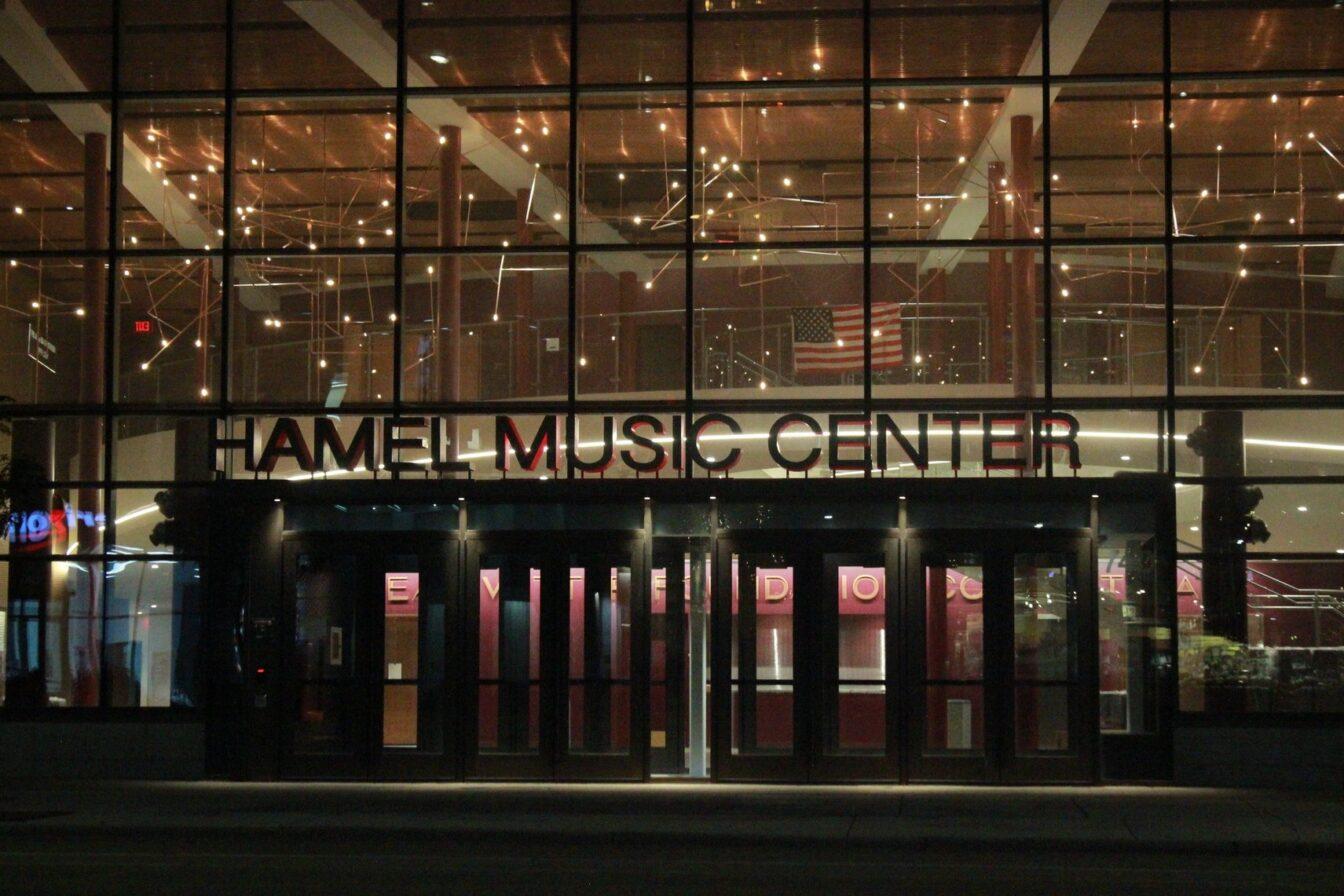The University of Wisconsin Union is hosting the National Symphony Orchestra of Ukraine at Mead Witter Concert Hall Feb. 20. This orchestra, currently embarking on a national tour of the U.S., is among the best symphony orchestras of Eastern Europe according to the event’s posting.
The program features an overture by Dmitry Bortniansky, a cello concerto by Robert Schumann and a symphony by Johannes Brahms.
These pieces chart a chronological journey from the late classical era to the romantic era in Europe. Joining the orchestra is Ukrainian solo cellist Natalia Khoma, performing the Schumann Cello Concerto in A Minor. This is a phenomenal opportunity to experience the union of a great orchestra and soloist, regardless of your experience or knowledge of classical music.
The National Symphony Orchestra of Ukraine, a continuation of the rich musical tradition of Ukraine, was founded in 1918 by the Council of Ministers of Ukraine, according to the orchestra’s website.
Since then, the orchestra has risen to international prominence with its recordings and tours. These recordings have received significant praise, earning the orchestra a Grammys nomination in 2005 for their performance of Silvestrov’s Requiem for Larissa and another in 2009 for their performance of Bloch and Lees’ Violin Concertos, according to the orchestra’s website.
In addition, the orchestra has performed with some of the greatest soloists of the 20th century, including pianist Arthur Rubinstein, violinist Yehudi Menuhin and violinist Isaac Stern. These awards and soloists are testaments to the quality of this symphony orchestra.
The National Symphony of Ukraine is conducted by Volodymyr Sirenko, a Ukrainian born conductor of great renown, according to his bio on the orchestra website. His conducting career began in 1983 at the Kyiv Philharmonic Hall. Over the course of his career, he has conducted with the Royal Philharmonic Orchestra, Sinfonia Varsovia, Jerusalem Symphony Orchestra and the BBC Philharmonic, among others.
In addition, he is very decorated, reaching the finals in the 1990 International Conducting Competition in Prague. After taking the position of artistic director and chief conductor of the National Symphony Orchestra of Ukraine in 1999, he helped the group achieve the aforementioned Grammys nomination in 2005. Since 1999, Sirenko has performed numerous concerts with the group and has toured with them around the world.
The soloist that is traveling with the National Symphony Orchestra of Ukraine on this tour is Ukrainian cellist Natalia Khoma. Khoma is an internationally recognized soloist that has been described as “intense,” “brilliant” and “deeply emotional,” according to her personal website.
Khoma has dedicated her whole life to the cello, making her first television appearance at the age of 10 and performing her first concerto, which is a solo performance with an orchestra, at the age of 13.
Over her career, Khoma has been highly decorated, winning numerous international competitions. Most significantly, she is the only Ukrainian cellist to become a Tchaikovsky Competition laureate. The Tchaikovsky Competition is a highly competitive international music competition held in Russia every four years. This demonstrates her impressive achievement as a cellist. She has played with numerous high profile orchestras during her career, including the Berlin Radio Orchestra, Moscow Radio Orchestra and the Budapest Philharmonic Orchestra, according to her website.
The program for this concert contains works that span from 1788 to 1877. This is a significant time period because it represents the transition from the classical era to the romantic era of music. The concert opens with Ukrainian composer Dmitry Bortniansky’s “Sinfonia” Overture from “II Quinto Fabio.” Composed in 1788, this piece feels firmly classical, with short staccato notes, highly structured parts and a harpsichord.
Following this piece is German composer Robert Schumann’s Cello Concerto in A minor. This piece was composed in 1850, sixty years after Bortniansky’s piece. In comparison, it feels far less rigid in its structure, and it conveys significantly more emotion. This is characteristic of the romantic era.
Finally, the concert concludes with German composer Johannes Brahms’ Symphony No. 2. Composed in 1877, the feeling of this symphony is a continuation of those expressed in the Schumann piece. The phrases linger and lack the rigidity of the Bortniansky piece and while not explicitly sad, contains parts that convey significantly more emotion. There is a natural progression between these three pieces.
This concert will be a great introduction to classical music for those inexperienced with the genre, as the program offers a tour through late 18th to late 19th century music. Listeners will be able to experience the rapid stylistic transition from the classical to the romantic through three phenomenal pieces performed by a world class orchestra, the National Symphony Orchestra of Ukraine.
Though the Wisconsin Union website lists the event as soldout, tickets range from $42 to $72, but Wisconsin students can get tickets that range from $8 to $12 with their student ID should they become available.


